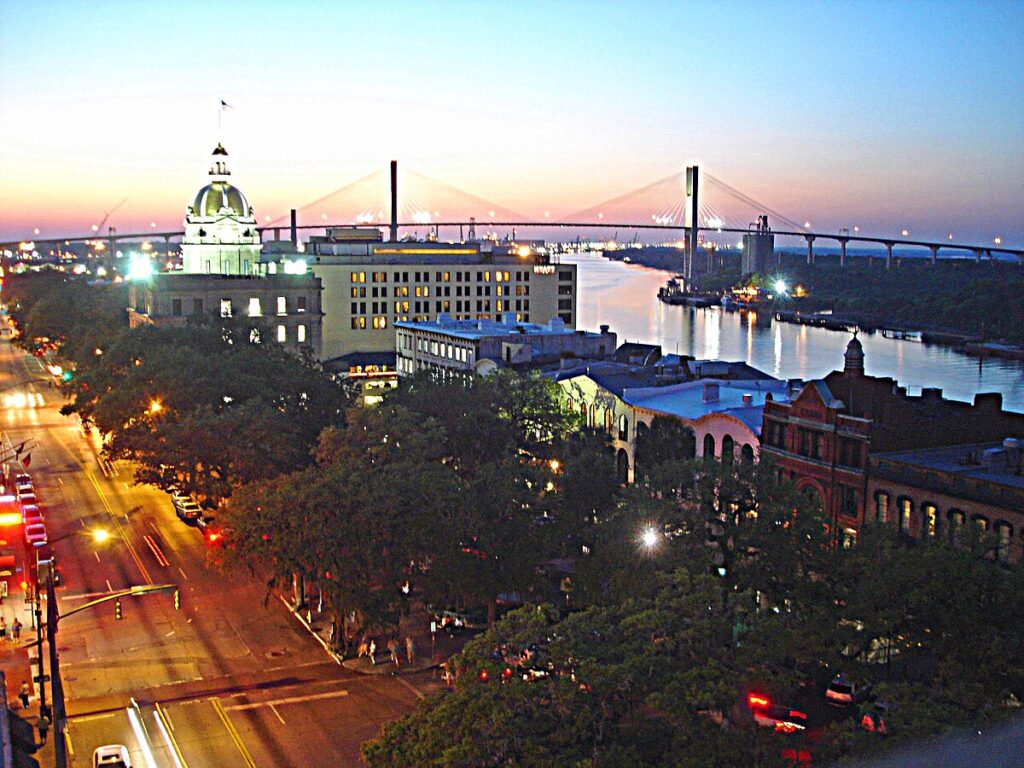
Moving to Savannah, Georgia: A Comprehensive Relocation Guide
Considering moving to Savannah, Georgia? This historic Coastal Georgia city offers Southern charm, preserved architecture, and waterfront lifestyle. With approximately 150,000 residents in 2025, Savannah combines antebellum elegance with thriving port economy and Georgia’s most beautiful city.
Demographic Profile to Consider If Moving to Savannah:
Savannah’s 2025 population is approximately 150,000 residents in this Chatham County city on the Atlantic Coast. The median age is around 33 years, with young professionals, students, military families, artists, and retirees. The population is approximately 54% Black or African American, 38% White, 5% Hispanic. Savannah features the stunning historic district with 22 park squares, Victorian District neighborhoods, SCAD’s artistic presence, and waterfront river development. The city’s identity centers on preserved 18th and 19th century architecture creating America’s most beautiful city. Savannah attracts artists, creative professionals, history lovers, and those seeking authentic Southern lifestyle. The community balances tourism with residential character and preservation ethic. Find trusted local services for moving, living, and working in Savannah.Savannah Relocation Directory
Cost of Living to Consider If Moving to Savannah:
Savannah offers moderate housing costs for a historic coastal city. Median home values range from $260,000 to $400,000 in 2025, with historic district properties commanding significant premiums. The median household income is approximately $52,000. Rental properties average $1,400 to $2,200 monthly, with tourist rentals affecting availability. Georgia’s state income tax is 5.75%. Overall cost of living is competitive for a coastal historic city, though rising with popularity. Savannah attracts diverse income levels from students to affluent historic homeowners. Housing costs vary dramatically from modest neighborhoods to million-dollar historic mansions. The combination of history, coast, and culture creates value compared to similar cities.
Economy and Job Market:
Savannah’s economy centers on the Port of Savannah (fourth-busiest container port in America), tourism, military, education, and manufacturing. The Georgia Ports Authority provides extensive employment. Tourism supports thousands in hospitality, restaurants, and attractions. Gulfstream Aerospace manufactures business jets employing thousands. Hunter Army Airfield influences the community. Savannah College of Art and Design (SCAD) is a major employer and economic driver. Memorial Health University Medical Center provides healthcare employment. Major industries include port logistics, tourism, aerospace, military, education, and healthcare. The diverse economy provides stability with growth sectors.
Education:
Savannah-Chatham County Public Schools serves Savannah students with numerous schools throughout the area. School quality varies significantly, with some excellent schools and struggling facilities requiring extensive family research. SCAD dominates higher education creating artistic atmosphere. Georgia Southern University’s Armstrong Campus offers comprehensive programs. Savannah State University, a historically Black university, serves the community. Savannah Technical College provides workforce training. The concentration of universities creates academic and artistic culture.
Recreation and Lifestyle:
Savannah offers the stunning historic district with 22 park squares, antebellum architecture, River Street along the Savannah River, and City Market. The city’s beauty attracts visitors globally. Forsyth Park provides 30 acres of recreation with iconic fountain. SCAD’s presence creates thriving arts scene with galleries and events. Tybee Island beach (20 minutes) provides Atlantic Ocean access. The Bonaventure Cemetery inspired “Midnight in the Garden of Good and Evil.” Residents enjoy walking historic streets, festivals year-round, ghost tours, and Southern cuisine. The Savannah Theatre and performing arts venues present shows. Professional hockey (Savannah Ghost Pirates) and college sports entertain. The lifestyle combines historic beauty, artistic energy, Southern culture, and coastal access. The subtropical climate enables year-round outdoor activities. The community values preservation, arts, Southern hospitality, and authentic character. Living in Savannah means embracing tourism, historic stewardship, and incomparable beauty.
Healthcare and Services:
Savannah residents access comprehensive healthcare through Memorial Health University Medical Center, St. Joseph’s/Candler Health System with multiple hospitals, and extensive medical facilities. The region’s healthcare infrastructure serves Coastal Georgia as a medical hub.
Transportation:
Savannah is accessed via Interstate 95, Interstate 16, U.S. Highway 80, and various corridors. Savannah/Hilton Head International Airport provides extensive domestic flights. Chatham Area Transit (CAT) operates bus routes and free downtown shuttle. Historic district and some neighborhoods offer excellent walkability. Most residents use personal vehicles. Typical commute times within Savannah are reasonable. Traffic increases during tourist season.
Conclusion:
Moving to Savannah in 2025 offers historic city living with preserved architecture, artistic energy, and coastal charm. The city’s combination of 22 park squares, SCAD arts culture, Southern hospitality, and Tybee Island access makes it ideal for artists, history lovers, and romantics seeking Georgia’s most beautiful destination where every street tells stories and Spanish moss drapes live oaks in America’s most perfectly preserved architectural treasure.

